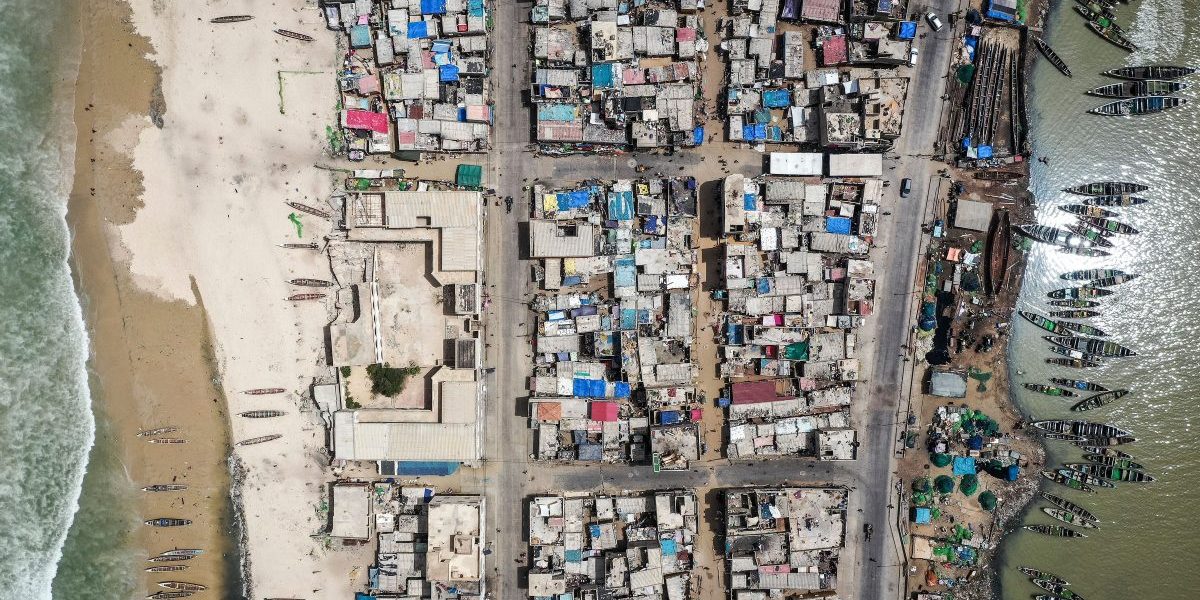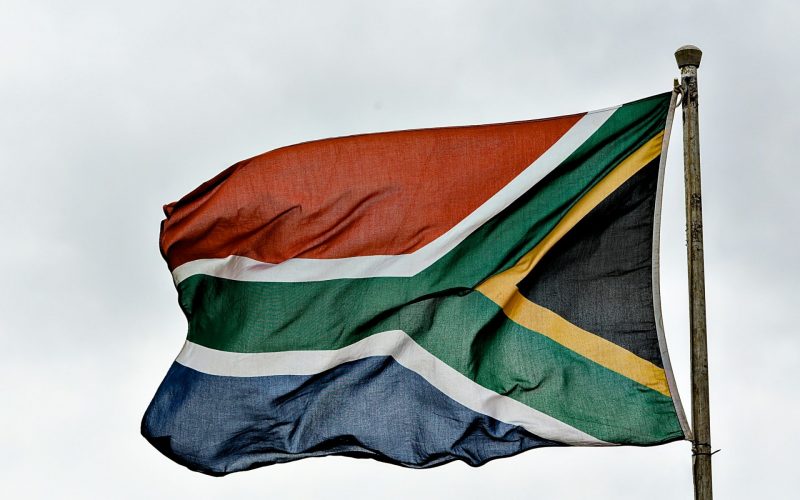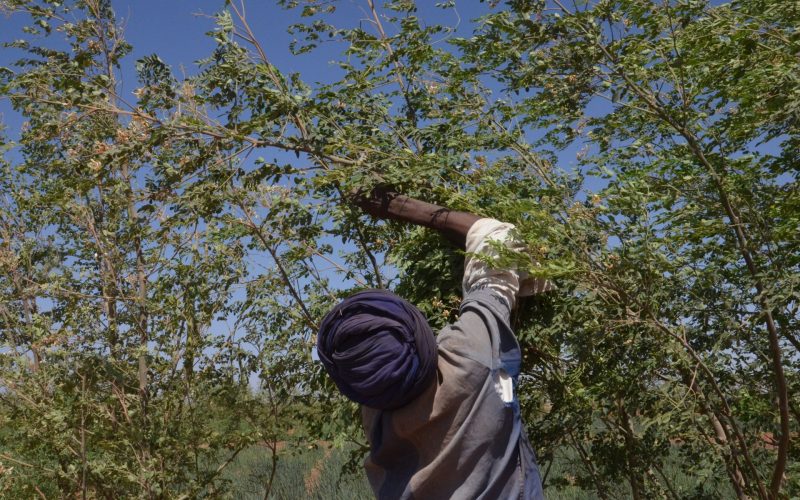Recommendations
- Provide different investment incentives, such as concessional financing, risk mitigation instruments and comprehensive investment plans, to stimulate private investment in adaptation projects.
- Develop narratives and models that demonstrate the business case for adaptation projects.
- Enhance investment readiness and adaptation planning at government institutions to attract funding from development partners, multilateral climate funds and the private sector. Introduce adaptation levies to generate revenues for public investments in adaptation projects.
- Lobby for an international goal on adaptation finance that is distinct from the general climate finance goal.
Executive summary
Climate change in Africa is an existential crisis – heightened climate impacts on food security, health, security and economic livelihoods affect the continent’s ability to achieve sustainable development. Adaptation becomes both a policy and an operational priority for African economies and societies. However, there is an acute shortage of adaptation funding owing to several barriers. This policy briefing highlights a few possible innovations for scaling up adaptation finance in Africa. One key point is the need to demonstrate the business case for adaptation investment to crowd in private capital flows, in addition to the growing public resources in many countries.
Introduction
Africa’s sustainable development is largely anchored on the region’s ability to adapt effectively to the impacts of climate change, which are increasing in frequency and intensity. Despite contributing only 5% of global greenhouse gas emissions, the region is the most vulnerable to the impacts of climate change, with seven of the 10 most vulnerable countries being in Africa.1African Development Bank, “Climate Change in Africa”.
With 95% of food production in Africa being rainfed, the region is vulnerable to extreme weather events such as increased temperatures, erratic rainfall, floods and droughts. For instance, the East African region has been experiencing a La Niña – a climate-related phenomenon that causes below-average rainfall and dry periods – which has exacerbated existing climate change impacts. As a result, the need for food assistance in the region has increased sharply, aggravating an already dire situation where 44.8 million people are currently food stressed.2Intergovernmental Authority on Development Climate Prediction and Applications Centre, “La Niña: Forecasted Drier than Usual Season Poses Risks to Crops and Livestock in Some Parts of the Region”, Press Release, November 11, 2020. This comes shortly after the region experienced floods and desert locust invasions, which resulted in extensive damage to crops and pastures.
The impacts of climate change come at a great cost. Events such as floods, tropical cyclones and drought have the potential to reverse development gains, owing to the damage to infrastructure, crops and homes and the loss of livestock and human lives. A 2019 report by the government of Mozambique after Cyclone Idai, for example, estimated damages across the four affected provinces at $1.4 billion, with transport infrastructure, housing, manufacturing and energy infrastructure the most affected, while total losses were estimated at $1.39 billion, with the agriculture, industry and commerce sectors hit the worst.3Global Facility for Disaster Reduction and Recovery, Mozambique Cyclone Idai Post Disaster Needs Assessment: Full Report (Washington DC: GFDRR, May 2019), 17.
To reduce the risks, vulnerabilities and impacts faced by African countries, continued and significant financial and technological resources need to be channelled into strengthening resilience and adaptive capacity. The UN Environment Programme estimates that developing countries alone require about $70 billion annually to adapt to climate change, with this cost expected to increase to $140–300 billion by 2030 and $280–500 billion by 2050.4UN Environment Programme, Adaptation Gap Report 2020 (Nairobi: UNEP, 2020). The African Development Bank (AfDB) estimates that the continent needs $7–15 billion every year to adapt to the impacts of climate change.5AfDB, “Opening Speech by Dr Akinwumi Adesina, President, African Development Bank Group, at the Launch of Global Center for Adaptation – Africa”, September 16, 2020. Financing for climate action in general, and climate adaptation and resilience building in particular, has gained traction at the recent G7 Summit, with a renewed commitment by developed countries to mobilise $100 billion annually to support developing countries.6G7, “Our Shared Agenda for Global Action to Build Back Better: Carbis Bay G7 Summit Communiqué”, June 2021. Climate finance, including adaptation finance, is also a priority topic for discussion at the upcoming UN Framework Convention on Climate Change’s 26th Conference of the Parties (COP26) in Glasgow.
Adaptation finance flows
Despite these large funding needs, financing for adaptation at global, regional and national levels remains very low. During the 2017–2018 period, global investments in adaptation stood at $30 billion per year, accounting for less than 20% of total climate finance for the period, of which developing countries received just two-thirds.7Arame Tall et al., Enabling Private Investment in Climate Adaptation and Resilience: Current Status, Barriers to Investment and Blueprint for Action (Washington DC: World Bank, 2020), vi. According to a joint multilateral development bank (MDB) report on climate finance flows published in 2019, of the $13.9 billion in adaptation finance that had been committed to low- and middleincome countries, sub-Saharan Africa received just $3.57 billion.8AfDB, Asian Development Bank, Asian Infrastructure Investment Bank, European Bank for Reconstruction and Development, European Investment Bank, Inter-American Development Bank Group, Islamic Development Bank and World Bank Group, 2019 Joint Report on Multilateral Development Banks’ Climate Finance, August 2020, 18.
Low levels of adaptation finance are also evident at country level. For instance, a report on Kenya’s climate finance landscape indicated that in 2018, 78.9% of climate finance went to mitigation projects, while only 11.7% went to adaptation and the rest (8.5%) to cross-cutting issues.9Peter Odhengo et al., The Landscape of Climate Finance in Kenya: On the Road to Implementing Kenya’s NDC, Report (Nairobi: Climate Policy Initiative, 2021), 23. Evidently, adaptation finance continues to lag behind mitigation finance globally and nationally. A priority action therefore among governments, development partners and the private sector should be to scale up adaptation finance, given the dire need for adaptation and resilience building in developing countries.
In the face of multiple and competing development priorities, coupled with the economic impacts of the COVID-19 pandemic, African governments alone cannot raise the resources required to effectively finance adaptation. Financing adaptation in the region will therefore require strong partnership and collaboration with development partners, financial institutions, civil society and the private sector.
Challenges in financing adaptation
Mobilising adaptation finance comes with challenges that stakeholders should both be mindful of and seek to address at all governance and policy levels – from global to local. For instance, there is a general perception that adaptation projects are public goods and thus have little or no potential for business or private investment opportunities. Unlike mitigation projects, there are often no clear models around costs, returns, viability and timelines, which limit private sector investment in adaptation projects. In 2017–2018, the private sector contributed only 1.6% of global adaptation finance.10Tall et al., Enabling Private Investment, iv.
Lack of adequate planning and readiness by countries to take up adaptation finance is another barrier to accessing these funds. Several African governments face challenges in developing proposals to access multilateral climate funds such as the Green Climate Fund, Global Environment Facility, Climate Investment Funds and Adaptation Fund.11Charlotte Ellis and Kamleshan Pillay, “Understanding ‘Bankability’ and Unlocking Climate Finance for Climate Compatible Development” (Working Paper, Climate & Development Knowledge Network, Cape Town, June 2017), 5–6. This is owing to a combination of factors, including a lack of technical skills to develop bankable proposals. In most cases, they also lack access to adequate climate data or the capacity to interpret climate data. This is indispensable in developing a strong project climate rationale that demonstrates the extent of country vulnerability to climate change, and the precise way in which the proposed interventions will address these vulnerabilities.12Ellis and Pillay, “Understanding ‘Bankability’ and Unlocking”. When it comes to attracting private sector investments, many African governments still lack comprehensive adaptation investment plans that clearly articulate the needs, costs, roles, responsibilities, incentive structures and return on investments for implementation of adaptation projects. Due to this ambiguity and lack of information, private sector actors, and even multilateral climate funds, tend to shy away from such investments.
A related challenge to securing finance for adaptation action is the inadequate mainstreaming of climate change risks and vulnerabilities into sector policies and plans. This hinders effective planning and budgeting for appropriate adaptation and resilience measures. Many of the developing country Nationally Determined Contributions (NDCs) and national adaptation plans do not have concrete adaptation investment plans. Furthermore, while most such plans have quantified the volume of climate finance required, these figures are seldom disaggregated into adaptation and mitigation finance, nor are they accompanied by concrete adaptation investment plans. This results in lost opportunities for financing adaptation.
A pathway towards increasing adaptation finance
To improve the flow of adaptation finance to Africa, several actions can be taken. First, more emphasis ought to be placed on private sector engagement, by demonstrating a strong business case for adaptation projects. This can be done by undertaking a costbenefit analysis of such projects that includes not only monetary but also non-monetary costs and revenues. In addition, governments should enhance public investments in adaptation and resilience-building projects (such as early warning systems) to help avoid the significant costs that are normally incurred when climate-related disasters occur. The Global Commission on Adaptation estimates that investing $1.8 trillion globally between 2020 and 2030 in early warning systems, climate resilient infrastructure, improved dryland agricultural crop production, global mangrove protection and water resource resilience could yield net benefits of $7.1 trillion. This translates to a benefit-cost ratio ranging from 2:1 to 10:1.13Global Commission on Adaptation, Adapt Now: A Global Call for Leadership on Climate Resilience (Rotterdam: GCA, 2019), 3.
A second intervention that has the potential to increase adaptation finance to African countries is strengthening the technical capacity of governmental and private sector agencies to develop bankable proposals for accessing multilateral climate funds. Accessing grants and concessional loans from multilateral climate funds provides an opportunity to crowd in private investments through blended financing. This ultimately increases capital flows for adaptation projects, with clear benefits for both investors and beneficiaries. Investment in technical capacity should be complemented with investments in obtaining reliable and comprehensive climate data to enable the development of strong climate rationales for projects seeking adaptation finance.
A third intervention is for governments to undertake budgetary identification of adaptation finance priorities/needs at a domestic level. To this end, there is a need to build the capacity of government ministries to mainstream climate risks into sector plans and strategies so that appropriate solutions and budgets can be designed and implemented. This calls for clear articulation of adaptation goals at the national level, as well as policies, laws and plans on responsibilities and outcomes to attract private sector support. Setting out adaptation and resilience goals at the national level, establishing the necessary policies, regulations and standards, and articulating clear plans (including clearly defined responsibilities for different actors, including the private sector) will create the enabling environment for private sector participation in adaptation projects.
A fourth intervention is for governments to consider levying taxes and levies, such as an ‘adaptation levy’, to fund public adaptation projects. The government of Fiji, for example, has introduced an Environment and Climate Adaptation Levy (a set of taxes on prescribed services, items and income) to fund works aimed at protecting the natural environment, reducing the country’s carbon footprint and adapting the economy, communities and infrastructure to climate change impacts. This model should be cascaded in other jurisdictions.
A fifth intervention is for developing country governments and like-minded agencies to lobby for a separate international goal on adaptation finance. This should be distinct from the general climate finance goal that tends to be spent all on mitigation projects.
A sixth intervention is for MDBs to enhance mobilisation of adaptation finance by scaling up their climate adaptation finance to be at parity with mitigation. The AfDB has already achieved parity between adaptation and mitigation finance and remains committed to balancing adaptation and mitigation finance. This should be encouraged and adopted by other MDBs to enhance their financing for adaptation projects.
Finally, governments could provide targeted financial incentives to attract private participation in adaptation projects.
Conclusion
With several reports and studies confirming that climate change is one of the greatest threats to humanity, finding sustainable solutions will require the urgent and joint efforts of governments, development partners, academia, civil society and the private sector to raise the required financial resources and implement the needed actions. Governments and development banks can jointly encourage private sector participation in climate adaptation and resilience building by developing strategies and products that will incentivise increased private investments. This can be through providing concessional financing, risk mitigation instruments and comprehensive investment plans that clearly outline the strategies, resources required and expected outcomes in addressing climate change.
Demonstrating the business case for adaptation investments is a key step that governments can undertake to attract private sector investment. Thus, development partners and financiers should work closely with governments to build the capacity of government officials to develop bankable proposals and viable investment plans to enhance access to international climate funds for adaptation and attract private investments in adaptation. Such capacity building should include developing skills in collecting and interpreting climate data and preparing technical documents such as feasibility studies, climate risk and vulnerability assessment, environmental and social impact assessments, and gender action plans.
Finally, countries should prioritise investment in climate technologies such as weather and climate information services and early warning systems to anticipate and act early on climate-related events. More investment in improved agricultural technologies is also needed to improve agricultural production and productivity. Innovative products such as disaster risk financing should be adopted as solutions to minimise losses incurred by governments when climate-related disasters occur. In addition, governments should consider establishing adaptation levies to raise revenues for public adaptation. They should also lobby for an international goal on adaptation finance that is distinct from the general climate finance goal. MDBs too could play a role in enhancing adaptation financing by scaling up their adaptation finance to be at par with mitigation finance.
By establishing both ex-ante and ex-post solutions, governments will be better equipped to create short-, medium- and long-term interventions that are backed by strong risk reduction measures. Most African countries are currently implementing and updating their NDCs and other climate-related policies. Accessing the required financial resources and technologies to implement these plans and actions will go a long way in strengthening their climate resilience and adaptive capacity and, ultimately, enable sustainable development. For Africa, the need to scale up adaptation financing cannot be gainsaid.
Acknowledgement
This briefing has been published as part of the project Climate Finance Innovations Towards COP26, funded by the Konrad-Adenauer-Stiftung Regional Programme on Energy Security and Climate Change in Sub-Saharan Africa.







